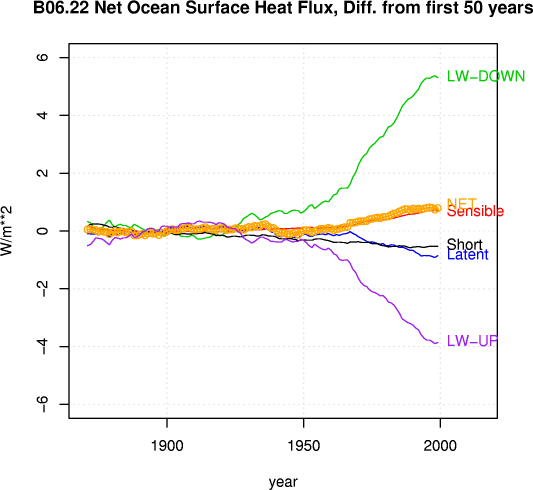
at the Scripps Institution of Oceaongraphy
 |
Accelerated Climate Prediction Initiative (ACPI)
Pilot Program
at the Scripps Institution of Oceaongraphy |
Back to main page for pilot-ACPI at Scripps
SIO Contribution to pilot-ACPI quarterly progress report, 06-27-2001
1. Objectives
The work done by SIO during this period represents new work incorporated into the pilot-ACPI project. As such, it does not fall directly into any of the original "phases" of the project but rather represents our taking advantage of new opportunities for exploring issues related to pilot-ACPI's goals.
The objectives for this period were:
2. Assemble data and interface routines for LANL's biological model
The biological modeling will be handled by Mat Maltrud at LANL, with the help of postdoc Joanne Lysne. Mat determined that the following variables are needed, at daily intervals, to force the biological model:
As of 06-27-2001, the PCM/CCM3 interface code required has been identified and modified as needed, but not yet tested to make sure it is working properly. An additional issue that will need to be addressed is how to match the atmospheric model grid to the ocean model grid. We will likely use SCRIP for that, which is a LANL product especially suited to remapping fields to POP's grid. However, some details of how to handle land values, and atmosphere cells that overlap both ocean and land, remain to be worked out.
3. Surface heat budget calculations for anthropogenic warming
The PCM historical runs all show an increase in surface temperature and ocean heat content. Since increases in anthropogenic gasses are the only difference in these runs from the control run (which does not show secular warming), it is fair to conclude that the gasses are forcing the warming. However, the traditional paradigm of how CO2 will warm the climate makes specific predictions of how the increase in ocean heat content will be accomplished -- by an increase in longwave emission from the atmosphere that warms the ocean. To our knowledge, this had not actually been tested in the PCM runs, just inferred from the results. It seemed worthwhile to perform a surface ocean heat budget for the model to see if this did, in fact, account for the model's ocean warming.
The results for one ensemble member, B06.22, are shown below. (The budges for five experiments were computed, but all were similar).

The net surface heat flux, which is directly driving the increase in ocean heat content, is shown in gold. The largest component driving the heat content increase is the increase in downward long wave radiation from the atmosphere (LW-DOWN), which is mostly but not completely compensated by increasing upward long wave loss from the ocean's surface (LW-UP) as the ocean SST increases. There are also smaller components that contribute; both shortwave and latent heat fluxes drop, presumably due to increasing cloudiness and a drop in wind speeds, respectively. On the other hand, the sensible heat flux increases, showing that the warmer atmosphere directly transfers some of its additional heat into the ocean.
The relative ranking of these sources is important, as it has bearing on the expected time relationship between the ocean's heat increases and atmospheric temperatures. If the primary increase in ocean heat content were arising from an increase in sensible heat flux, this would impart a decadal lag between increases in atmospheric temperature and the subsequent forced increase in ocean heat content. However, the largest component is actually the longwave flux, which drives a increase in ocean heat content that is simultaneous with the increase in atmospheric temperatures.
Finally, we note that the net increase in surface heat flux is a small
residual between the increased longwave downwards from the atmosphere and
the increased upwards from the ocean's surface. To our knowledge
this has not been specifically noted before, and might have impliciations
for interpreting studies of changes in the atmosphere's energy balance.